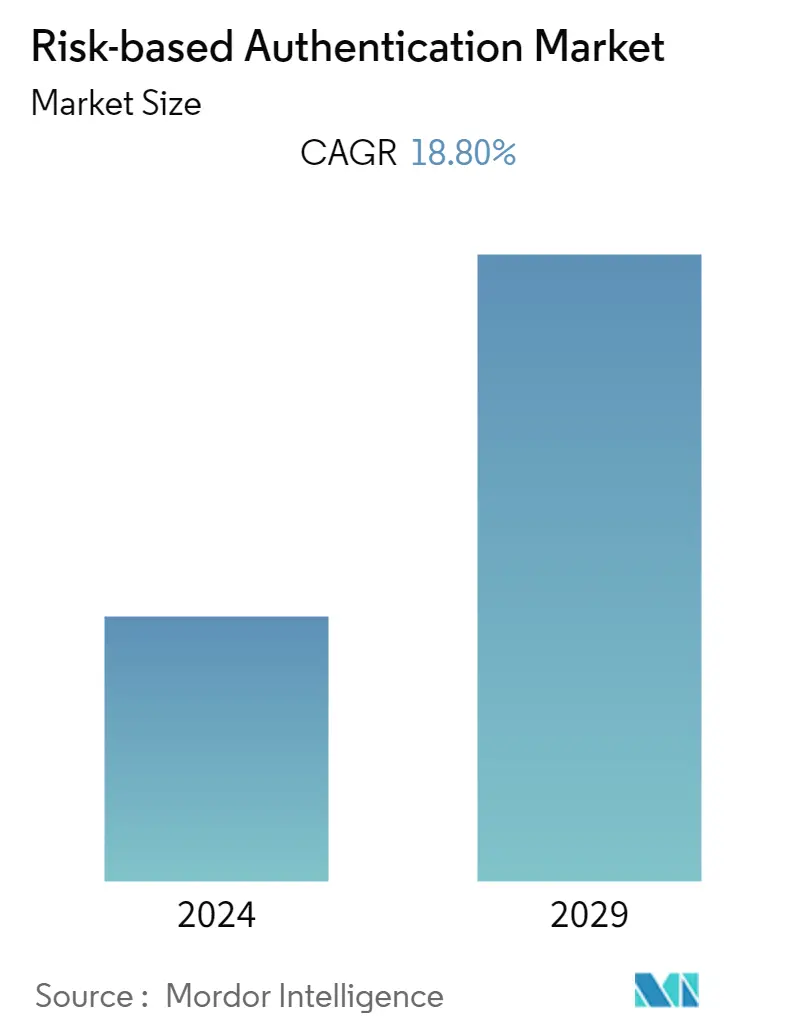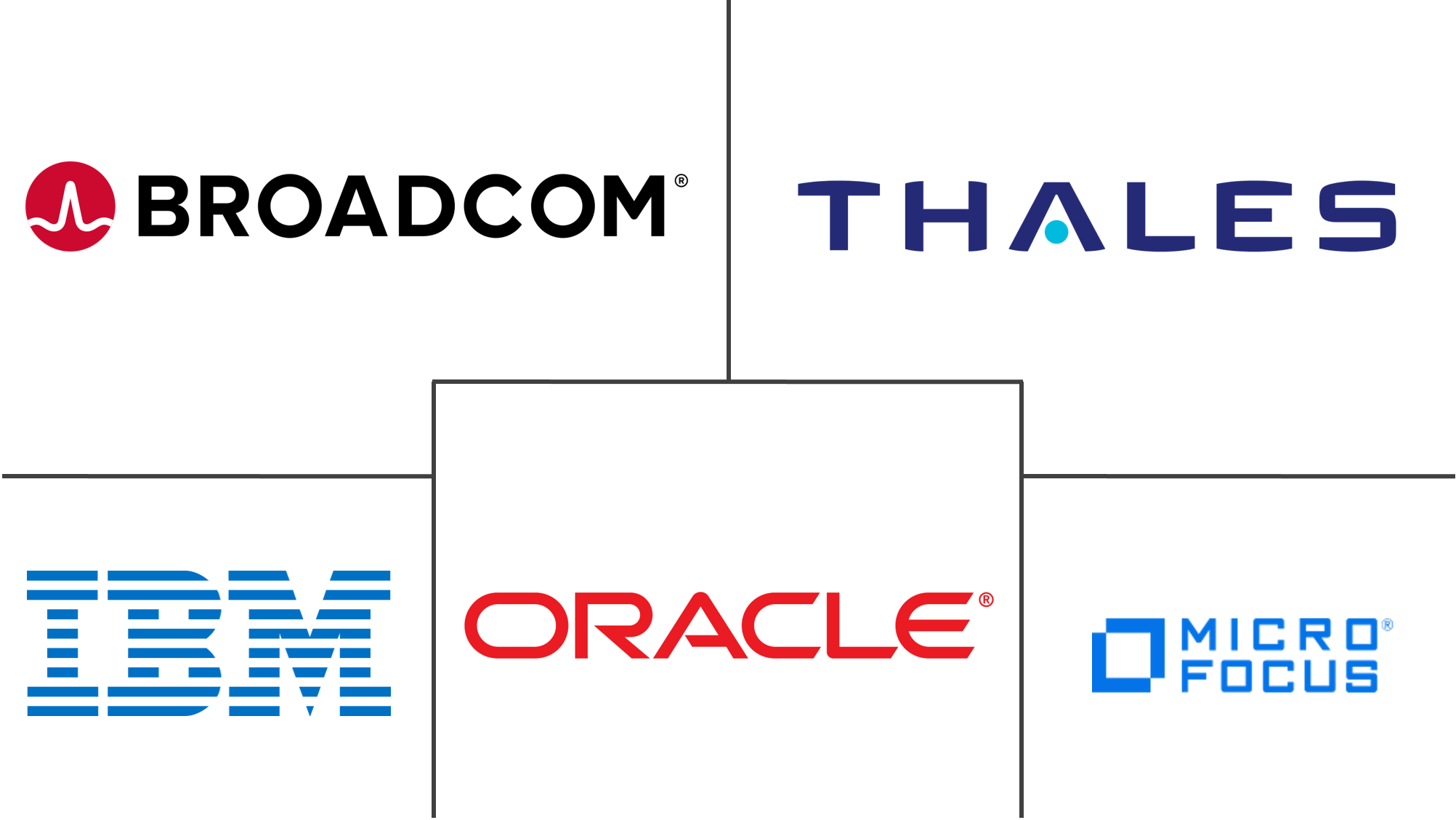Market Size of Risk-based Authentication Industry

| Study Period | 2019 - 2029 |
| Base Year For Estimation | 2023 |
| CAGR | 18.80 % |
| Fastest Growing Market | Asia Pacific |
| Largest Market | North America |
| Market Concentration | Low |
Major Players
*Disclaimer: Major Players sorted in no particular order |
Need a report that reflects how COVID-19 has impacted this market and its growth?
Risk-based Authentication Market Analysis
The global risk-based authentication market (henceforth referred to as the market studied) was valued at USD 3.23 billion in 2020. It is expected to reach USD 9.41 billion by 2026, registering a CAGR of 18.8% during 2021-2026 (henceforth referred to as the forecast period).
- The COVID-19 pandemic has led to significant growth in fraudulent activities across the globe. According to the Federal Trade Commission, in March 2021, more than 217,000 Americans had filed a coronavirus-related fraud report since January 2020, with losses to Covid-linked fraud totaling USD 382 million. Similarly, the Consumer Financial Bureau fielded 542,300 fraud complaints in 2020, a significant 54% increase compared to 2019.
- Furthermore, according to the Association of Certified Fraud Examiners or ACFE, due to the pandemic, the cyber fraud risk significantly increased from 45% in May 2020 to 47% in August 2020. In addition, it is expected that an increase in cyber fraud risk is expected to reach 60% over the next 12 months.
- Digital channels are becoming imperative as consumers interact with businesses and each other. In the digital world, to accommodate their customers and better manage their organizations, companies are becoming increasingly dependent on a web of systems, both on and off their networks. Such systems assist in managing, storing, and transmitting various information, such as financial accounts, intellectual property, personally identifiable information, transaction records, and others.
- In support of this, various organizations are increasingly adopting automation solutions to enable fast workflow and analyze the work processes to improvise the areas that challenge the company's progress. This has resulted in a massive shift from traditional storage and analytics to cloud-based infrastructure and storage technologies. According to a Flexera 2021 State of the Cloud Report, based on a survey of 750 IT professionals, 92% of the respondents have a multi-cloud strategy, while 82% have a hybrid cloud strategy. About 36% of enterprises reported that their annual spend exceeded USD 12 million, and 83% said that cloud spend exceeds USD 1.2 million per year.
